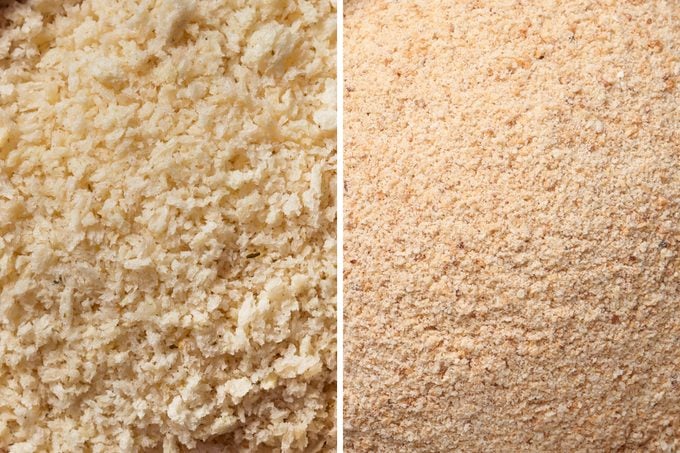What Is Panko?
Updated: Apr. 06, 2022

Does your recipe call for panko? We have the low-down on Japanese-style bread crumbs, including when you can substitute classic bread crumbs.
My first experience with tonkatsu was eye-opening. I was in Tokyo with my family on a mission to eat as much ramen as humanly possible, but the hotel concierge told us we shouldn’t leave without a visit to Tonkatsu Maisen. So we took the train to Shibuya and ordered away. A thin, panko-breaded pork cutlet arrived at the table on a plate lined with a wire rack, keeping the fried pork elevated so it wouldn’t get soggy with condensation. To be honest, I didn’t know what to expect. After all, could Japanese fried food rival the southern fried chicken I had grown up eating?
The experience was transformational. It reminded me of German schnitzel, but the breading was extremely crunchy—crunchier than any fried cutlet I’d ever had. When we got back to the hotel, I asked the concierge what made the pork so crispy. His answer? Panko bread crumbs.
What Is Panko?
Panko is a unique style of bread crumb used in Japanese baked and fried dishes. It starts with baking bread in a specially designed oven using electric current instead of heat. That produces a crustless white bread that’s soft and dense. The bread is then dried and ground into coarse flakes that are larger than regular bread crumbs.
Panko vs. Bread Crumbs

Shape and Texture
Panko bread crumbs are ground into a coarse flake with a sliver shape. Classic bread crumbs are processed into a finer crumb, and their shape is generally round. When used as breading, the size and shape of the panko creates a thicker, more textured coating compared to regular bread crumbs.
Flavor
The bread produced to make panko is a simple yeasted bread, giving the panko a neutral flavor. Classic bread crumbs taste of whatever bread was used to make them (think sourdough, white or wheat), so their flavor can vary. You’ll also find Italian bread crumbs or seasoned bread crumbs at the grocery store, which have added herbs and spices.
Finish
The electric current used to bake panko dough produces tiny air pockets in the bread. Combined with the panko’s flaky shape, these air pockets prevent the absorption of oil, giving panko a crispier, crunchier finish compared to that of regular bread crumbs. Classic bread crumbs are made from stale bread, so they tend to absorb more oil as the food fries and create a dense finish.
Best Uses
Panko is perfect for Japanese recipes like tonkatsu or chicken katsu, but it’s incorporated into Western recipes, too. Use them anytime you want to make a classic fried recipe crispier, like chicken tenders, crispy chicken for salad or air-fryer calamari.
Classic bread crumbs are a no-brainer for recipes where the bread crumbs help bind the ingredients, like stuffing or meatballs. They can also be used for fried food, but the result will be more bready than crispy. This is perfect for fried recipes like chicken Parmigiana where the bread crumbs can absorb the sauce, or air-fryer ravioli when the breading adds flavor in addition to texture.
Substitutions
These two types of bread crumbs are generally interchangeable, so don’t be afraid to use one instead of the other. Keep in mind that panko is crispier than classic bread crumbs, so it adds a different texture to the finished dish. That said, we love how surprisingly crispy you can make mac and cheese by topping it with panko instead of bread crumbs. That same level of crispiness wouldn’t be appropriate in a recipe like bola-bola, though, so substitute with care.




















